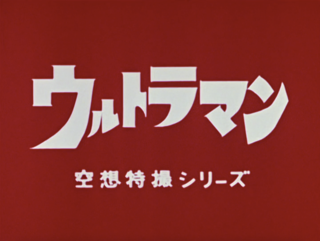
Ultraman is a Japanese tokusatsu science fiction television series created by Eiji Tsuburaya. Produced by Tsuburaya Productions, it is a follow-up to Ultra Q, though not technically a sequel or spin-off. Tsuburaya Productions produced 39 episodes that aired on Tokyo Broadcasting System (TBS) and its affiliate stations from July 17, 1966, to April 9, 1967. Its premiere topped the average rating set by Ultra Q and kept climbing each week, marking the show as a success. It was also the first Japanese television series to use a bidding system for commercial rights, allowing multiple third-party companies to sponsor the show. This was following TBS's merchandising troubles with its predecessor.
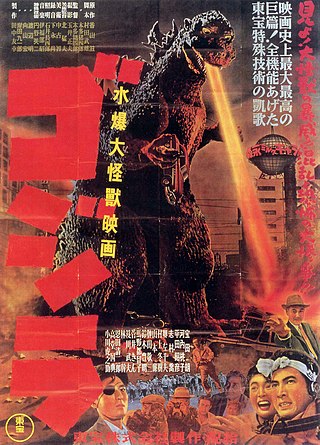
Tokusatsu is a Japanese term for live-action films or television programs that make heavy use of practical special effects. Credited to special effects director Eiji Tsuburaya, tokusatsu mainly refers to science fiction, war, fantasy, or horror media featuring such technology but is also occasionally dubbed a genre itself. Its contemporary use originated in the Japanese mass media around 1958 to explain special effects in an easy-to-understand manner and was popularized during the "first monster boom" (1966–1968). Prior to the monster boom, it was known in Japan as tokushu gijutsu or shortened tokugi.
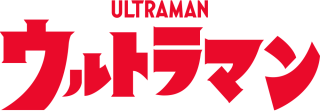
The Ultra Series, also known as Ultraman, is a Japanese science fiction media franchise owned and produced by Tsuburaya Productions, which began with the television series Ultra Q in 1966 and became an international pop-culture phenomenon. The franchise has expanded into many television shows, films, comic books, and other media publications, becoming one of the most prominent productions in the Japanese tokusatsu and kaiju genres and pioneering the Kyodai Hero subgenre. The Ultraman series is centered on a fictional alien race of superheroes who often combat kaiju or other aliens.
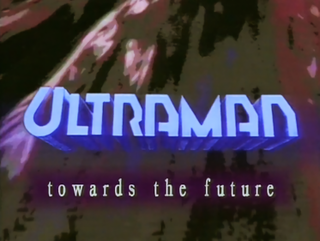
Ultraman: Towards the Future, released in Japan as Ultraman Great, is a Japanese–Australian tokusatsu science fiction television series produced as a co-production between Tsuburaya Productions and the South Australian Film Corporation. It is the 10th installment in the Ultra Series, the first series to be produced during Japan's Heisei period and the third foreign production in the franchise after Ultraman: The Adventure Begins.

Ultraman Tiga is a Japanese tokusatsu TV drama and the twelfth show in the Ultra Series. Produced by Tsuburaya Productions and Mainichi Broadcasting System, Ultraman Tiga had aired at 6:00 pm and aired between September 7, 1996, to August 30, 1997, with a total of 52 episodes with five movies.

Ultraman Dyna is a Japanese tokusatsu TV show which aired from 5 September 1997 until 28 August 1998. It is a direct sequel to the previous Ultraman series, Ultraman Tiga and the 13th entry to the Ultra Series.

Return of Ultraman is a Japanese tokusatsu science fiction television series produced by Tsuburaya Productions. The fourth entry in the Ultra series, the series aired on Tokyo Broadcasting System from April 2, 1971, to March 31, 1972. It became successful enough to inspire a second "Kaiju Boom" in Japan, with rival studios producing their own tokusatsu shows and Tsuburaya Productions producing additional Ultraman shows annually for the next three years. Prior to the series' release, Ultra Q, Ultraman, and Ultraseven were stand-alone titles however, Return of Ultraman is the first installment to unite the first three shows into an interconnected universe.

King of the Monsters is a fighting game developed by SNK, released for arcades in Japan in 1991, and ported to the Neo Geo AES later that same year. The game features playable giant monsters that are reminiscent of characters from kaiju and tokusatsu films.
Ultra Galaxy Mega Monster Battle is the first season of its series that is the 21st entry in the Tsuburaya Productions' long-running Ultra Series. It is an adaption of the video game Mega Monster Battle: ULTRA MONSTERS. The show first aired on December 1, 2007 and concluded on February 23, 2008. On December 20, 2008, the second season titled Ultra Galaxy Mega Monster Battle: Never Ending Odyssey premiered. Ultra Galaxy was the first Ultra Series to be shown as a pay-per-view service.
Teenage Mutant Ninja Turtles is an American animated television series developed by Ciro Nieli, Joshua Sternin, and Jennifer Ventimilia for Nickelodeon, based on the characters created by Kevin Eastman and Peter Laird. The series begins with the Turtles emerging from their sewer home for the first time, using their ninjutsu training to fight enemies in present-day New York City. The series ran in the United States from September 28, 2012, to November 12, 2017.

Ultraman is a superhero who debuted in the pilot episode to his 1966 TV series of the same name, entitled "Ultraman". He is the first tokusatsu hero launched by the Ultra Series and by extension, Tsuburaya Productions. His appearance in the entertainment world helped spawn the Kyodai Hero genre with countless shows such as Godman and Iron King.

Ultraman Nexus is the titular character of the 2004-2005 Ultra Series Ultraman Nexus. His true form is the legendary warrior Ultraman Noa, he chased his twisted doppelgänger Dark Zagi and managed to defeat the villain but the battle cost him his true form, causing him revert first into Ultraman The Next where he chased the Space Beast, Beast the One to Earth and bonded with an Air Force pilot named Shunichi Maki. Five years later in 2009, he evolved into Ultraman Nexus and bonded with several hosts, called Dunamists to fight against a wave of Space Beasts and the dark giants. When Dark Zagi rose to prominence once more, Nexus bonded with Kazuki Komon and regained his true form, Noa, defeated the evil warrior and finally killed him for good.

Ultraman Mebius Side Story: Hikari Saga is a Japanese direct-to-video web series launched by FLET'S Square, Japan's first internet television delivery service. The web series was available to be watched from June 30, 2006 until March 31, 2007 whereas DVD release of the miniseries is available under the label Bandai Visual.

Ultraman Mebius is a fictional superhero from the 2006 Ultra Series entry, Ultraman Mebius. In the series, Mebius was introduced as a rookie member of the Land of Light's Inter-Galactic Defense Force, who was sent to Earth for the first time after the previous Ultra, Ultraman 80, left Earth. Upon his arrival, Mebius fought against a series of monster attacks on Earth while at the same time joining the ranks of Crew GUYS as Mirai Hibino.
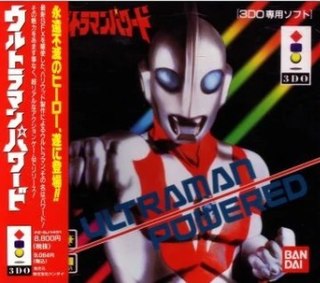
Ultraman Powered is a fighting game developed by Tose and published by Bandai for the 3DO Interactive Multiplayer. The player takes on the role of the extraterrestrial superhero Ultraman Powered, tasked with protecting the Earth from destructive aliens and monsters. Gameplay primarily consists of one-on-one battles where the player must deplete an adversary's health meter using both basic and special fighting techniques. The game also contains 3D rail shooter sections and a two-player versus option.













